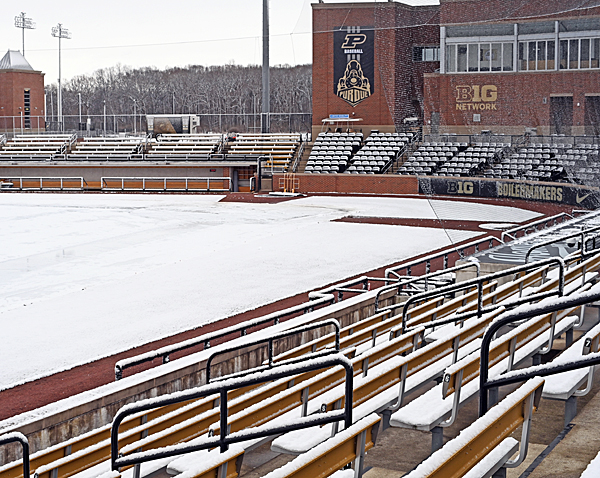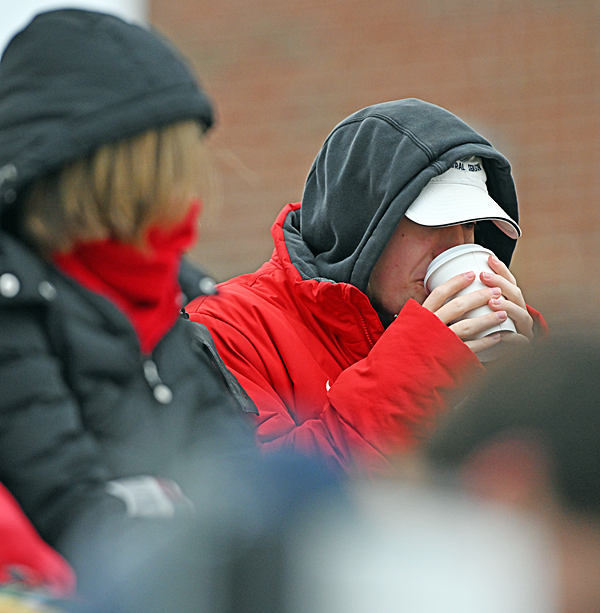
March 29, 2022, at Purdue…”I think we could pay for ourselves. But we can’t sell out in March, and we’re spending too much to travel for the first four weeks of the season [to play in warm weather].” – Iowa coach Rick Heller
 There’s an electronic ‘stack’ of responses on my desk over Ohio State’s hire of Justin Haire on Friday, and our interview with him becoming the 13th head baseball coach of the Buckeyes.
There’s an electronic ‘stack’ of responses on my desk over Ohio State’s hire of Justin Haire on Friday, and our interview with him becoming the 13th head baseball coach of the Buckeyes.
I love the interaction with an audience of the most anonymous of all ‘Buckeye Nation’, those who care about baseball. Lost in the din of college football, they’re the least-heard (or never heard) and we’re pleased to share their voice whenever time dictates. Such is that time, now.
Notably, there’s not been one question over Haire, himself. In fact, quite the contrary. Optimism is high, as it was with the Mosiello hire.
“They should have hired him two years ago,” wrote someone from Hamilton, Ohio, his hometown.
“Great hire…solid,” came another from the state of Florida.
“We move on from the day he moves in,” wrote another. “We can be… SO…MUCH…BETTER.”

Editor and publisher Sonny Fulks writes OHSAA sports and Buckeyes baseball for Press Pros Magazine.
Hmmm! Mosiello used the term frequently…we’ve got to get better. He just didn’t have the button to push to make it happen, albeit his sample size was kinda’ short.
So it seems, through comments from the caring – along with realities of the past – that Justin Haire is just the first step to whatever good comes next for Buckeye baseball. Great a leader as Julius Caesar was, however, he had other, bigger, issues that he simply couldn’t beat.
In a parallel column to our own on Friday night the Columbus Dispatch posted its own interview with Haire (https://www.dispatch.com/story/sports/college/baseball/2024/06/21/why-justin-haire-left-campbell-to-be-ohio-state-baseball-coach/74176020007/) that revealed another, age-old reality pertinent to Buckeyes baseball and the immovable object to becoming SO…MUCH…BETTER.
Quoting Haire and a comment from athletic director Ross Bjork about the hire: “[He] wanted a coach excited about the program, how it is, and has a vision of how we can grow it organically and sustainably.’”
Reading further: “A big piece of knowing who you are is knowing who you’re not,” Haire said. “Mr. Bjork’s been at Texas A&M and Ole Miss. He’s been in some of those SEC places. And he was just very honest, like, ‘Hey, we’re wanting to compete and be at that highest level. But the NIL capability for baseball is not the same as it is in those SEC places.'”
I didn’t read the post in the Dispatch, itself, but it was forwarded to me by those who follow college baseball, along with the following:

New coach Justin Haire will have to navigate the reality…that half the nation is playing ‘heirloom’ baseball while the other half plays ‘hybrid’.
From Jim in Arizona: “If the goal is to win the Big Ten Tournament, that’s always been sustainable. ”
From Tom in central Ohio: “No one talks ‘organic’ when it’s football.”
And this from Doug in Scioto County: “What’s sustainable with Big Ten baseball is accepting what you might never be.”
They’re out there, and you’ll find them from every decade of Buckeye and Big Ten baseball since the 70s – former players who’ve witnessed the inequities of baseball due to money. In fact, ask a former player from any Big Ten school and they’ll share with you that there are two kinds of athletes. There’s football, and everyone else. The resources – sustainability – about which Bjork cautions, just aren’t there for baseball.
They never have been, since the days of my Ohio State coach, Marty Karow, going from table to table at Denny’s and telling players what to order from the menu, according to their performance on the field that day. If you played well you could get a steak. If you went 0 for 4 you got grilled cheese.
They eat better now, but what’s sustainable is the reality that not much else has changed with baseball played above the Mason-Dixon line in the past 50 years. It was not Greg Beals’ fault. It was not Bill Mosiello’s fault. It won’t be Justin Haire’s fault. Trust it, ask all the Big Ten coaches and their story is similar. They’d love to compete at the highest level, but there is that matter of dealing with what you’re not.
“We just accepted it [back then],” said John Littlejohn at the baseball golf fundraiser last week. Littlejohn was a Buckeye teammate of mine from 1971 through ’75.
Sure, because we knew no different. It was Ohio State, the Mount Rushmore of Ohio baseball. What could go wrong?
The bus rides to road games on University buses, the ones with the bench seats.
Being locked out of the North Athletic Facility on Monday after the final game of the season on Saturday. “Baseball is over,” said equipment manager John Bosick. And he meant it.
And…Denny’s!
Improvement? Sure. The facilities have improved a hundred fold, from old Trautman Field as compared to Bill Davis Stadium. The center field fence at Trautman was 370 feet. The dugouts were like a bomb shelter. Sit on the bench and you couldn’t see the pitcher’s mound. There were no lights, no seats, and foul balls were retrieved from amongst the Holsteins that grazed in the field across the road.
Was the baseball good? Sure, because players like Dave Winfield and Paul Molitor (at Minnesota) were hometown guys with no reason to leave Minneapolis and play anywhere else. There was no television contract for college baseball and no one even considered what it might be like in the SEC.

The average athletic budget among Big Ten schools is $180 million a year. The average annual baseball budget is just north of $1 million – roughly .005 %. (KnightNewhouseData.org)
But today…there are those who believe that baseball actually COULD sustain itself? According to Iowa coach Rick Heller it could, if the season was played in warmer weather.
“I think we’d draw enough people to our new stadium to take pressure off the budget,” he said at the Big Ten Tournament. “I think we could pay for ourselves. But we can’t sell out in March, and we’re spending too much to travel for the first four weeks of the season [to play in warm weather].”
How serious is Heller?
“Don’t get me on my soap box,” he says. “But I think we could if we were given a chance.”
Obviously, this a different day, at least for some. Ross Bjork came from the SEC (Texas A&M, currently tied 1-1 in the College World Series), and a culture of baseball with what amounts to many southern schools having 32 fully-funded scholarships instead of the 11.7 that Big Ten schools enjoy. They’ve had NIL for years in the South. They just called it something else.
I love the enthusiasm of a Justin Haire to become a Buckeye.
I like hearing Haire talk about connectivity, and healing some of the wounds with former players and alumni – respect for both old traditions and new expectations.
But ‘organic’ concerns me, as it does to some who wrote to Press Pros since the weekend.

“Coaches in the South don’t want it (the change). They already have the advantage of warm weather – recruiting and playing in predictable conditions. If you give that to teams in the North you’d have a whole different [competitive picture], nationally.” – Purdue coach Greg Goff
Realistically, how can you want to be a Buckeye bad enough to turn down a half million dollars from Florida or Arkansas?
Sure enough, it is a new day, what Haire said in our Saturday column…”the way of the world in college athletics.” But does anyone really believe that NIL is enough to level the field for baseball under the Northern Lights?
And how can the recent announcement that schools have to share revenues with the athletes work…when 80% of that figure is going to sports other than baseball?
So that same old question goes unanswered. How do you compete at the highest level with fewer scholarships?
How do you compete at Nebraska and Iowa, when you have to wear Carhartts in April?
Can you really compete, knowing who you are, and accepting who you might never be?
After 55 years of Big Ten baseball I know I won’t live to see it. But hope…sustains me!



